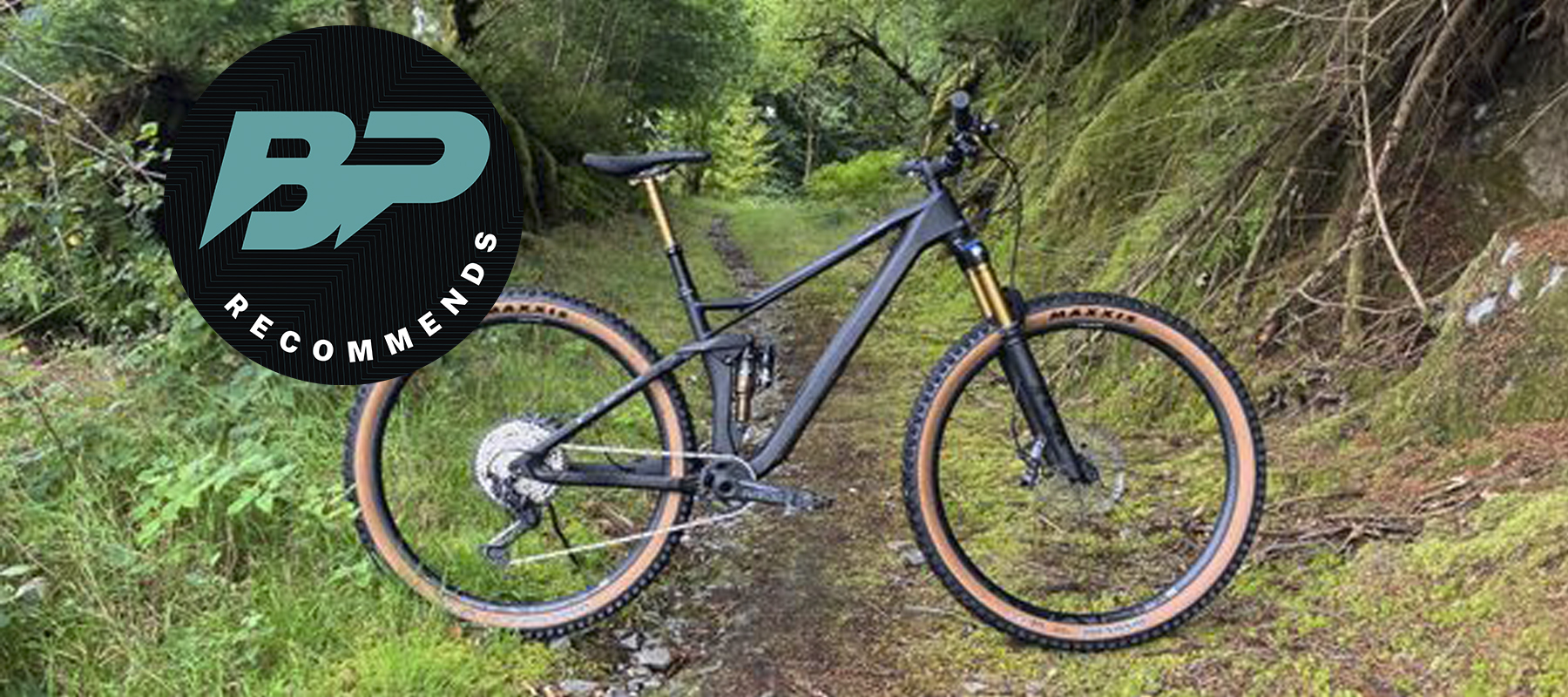Bike Perfect Verdict
Even though the Cube Stereo ONE22 has been out for a few years, this well-equipped variant of the trail all-rounder shows that a bike doesn’t need the very latest geometry to be mind-expandingly fun.
Pros
- +
Comfortable, composed but lively
- +
Sublime Fox 34 Float Factory FIT GRIP2 fork
- +
Strong, hassle-free performance from XT brakes and gears
- +
Smooth, bombproof wheels
- +
Good price
Cons
- -
Relatively conservative geometry
- -
Light enough, but SLT variant is 1.6kg lighter
Why trust BikePerfect
Another week, another enthusiastic write-up of a bike that was the wrong one for the group test I planned to do, but a very happy substitute. If the Cube Stereo ONE22 HPC EX 29 was fate’s way of telling me to broaden my horizons, it worked. This all-round trail bike is not going to be joining me for XC racing any time soon, but after a summer of grins across some of Snowdonia’s finest trails, it’s got me more fired up about my riding than I have been for years.
The irony is that what for me was a genuinely mind-expanding bike, turns out to be actually relatively conservative these days. Unlike its recently redesigned bigger brothers in the Cube full-sus lineup, the ONE22 for now is a renamed Stereo 120, which is over four years old. The good news is that it remains popular as a 'good moderate trail bike for everyday use', in the words of our man at Cube. And that sounds like me all over. And the even better news is that the HPC EX29 is a recent spec variant to show off Fox’s $1,039 / £1,139 34 Float Factory FIT GRIP2 fork, which has been described as flawless in its fluidity, control and adjustability (and not just by Fox).

Design and geometry
The Stereo ONE22 is based around a four-bar suspension layout, with 120mm of travel in the rear, and 130mm up front. The frame is mainly carbon, with an aluminum rear triangle to keep the cost down, and it’s the same one that’s used across the ONE22 range, from the entry-level TM to the gram-shaving SLT.
It’s a good looking bike, svelte but purposeful, with smooth, neat lines and subtle bevels. The internal cable routing goes through the front of the head tube to keep things clean, and the tanwall tires look classy alongside the extravagant gold Kashima-finished shock, fork stanchions and seatpost.
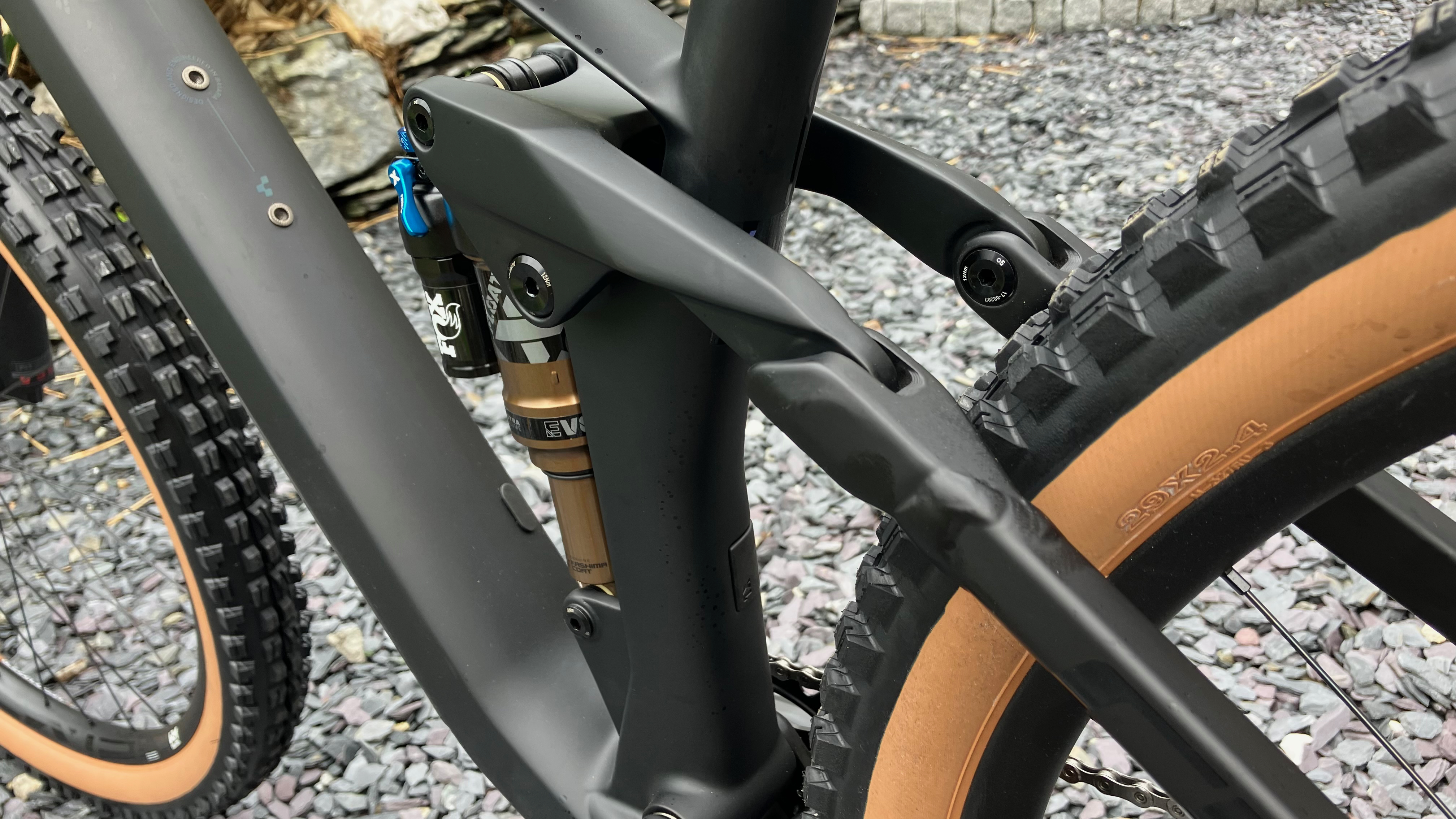
The longer-travel bikes in Cube’s range have moved to the longer, slacker geometry that’s on-trend now, with head-tube flip-chips, and the ONE22 will go that way eventually. For me, this current ONE22 struck a nice balance – infinitely more stable than the XC bikes I’m used to, but not lazy feeling. Some of a bike’s stated geometry varies according to what’s happening with the suspension at any point, but here are some comparisons for my size medium. The reach is 10-15mm shorter than downcountry bikes like the Transition Spur (455mm) or trail bikes like the Stumpjumper (450/455mm) or YT Izzo (450mm), and the wheelbase is 1-3cm shorter. The head tube is half a degree to one degree steeper and the seat tube is one to two degrees slacker.
I guess, all else being equal, that means the Stereo ONE22 is a little more upright than some of its contemporaries, and that it trades a little stability for faster handling. The good news is that here all else isn’t equal to many bikes at this price point, and those Fox forks and shocks which you could easily see on a bike twice the price bring some sublime handling to the party.
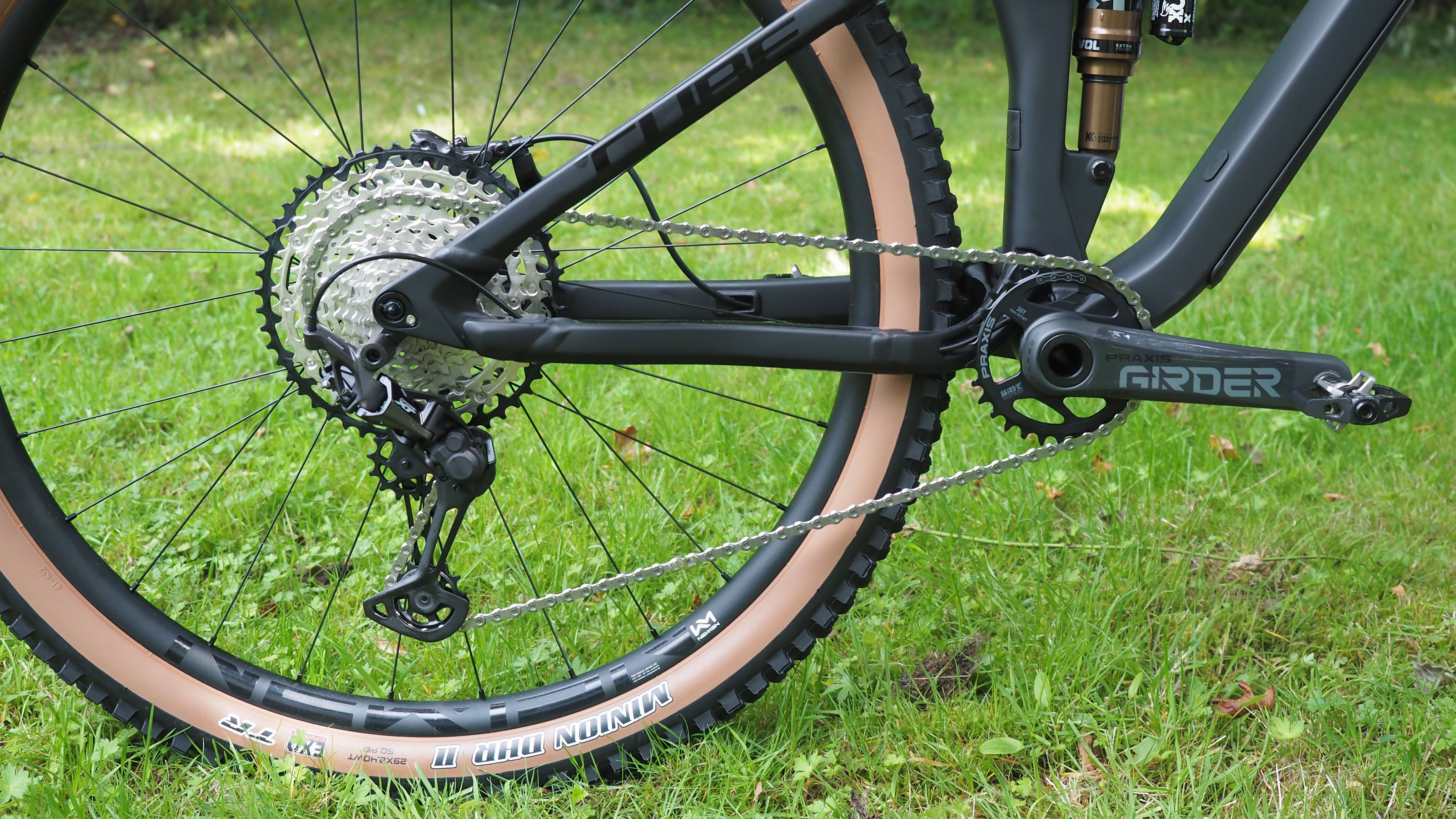
Components and build
As long as you’re happy with non-electronic gears, the spec list of the Stereo ONE22 HPC EX 29 is one you probably wouldn’t be in any rush to upgrade.
Shifters and mech are the robust and dependable Shimano XT (with an SLX cassette that adds 60g over XT), and brakes are also XT, with a strong four-pot caliper and 203mm rotor setup at the front ,and a two-pot 180mm at the back.
At the front, 130mm of unflappable travel comes from the Fox 34 Float Factory FIT GRIP2 fork. Like the other Fox 34s in the current generation, it has internal air channels that help to keep the fluid circulating and keep full travel available more of the time; and extra volume in the negative air chamber for better mid-stroke support. The GRIP2 variant on my Stereo ONE22 EX also has high and low speed adjustment options for both compression and rebound, and adjustable volume spacers to tweak the way the fork compresses through its stroke.
The rear Float X Factory shock has external adjustment for low speed rebound and compression, a lockout lever, and, like the fork, can also take volume-reducing spacers.
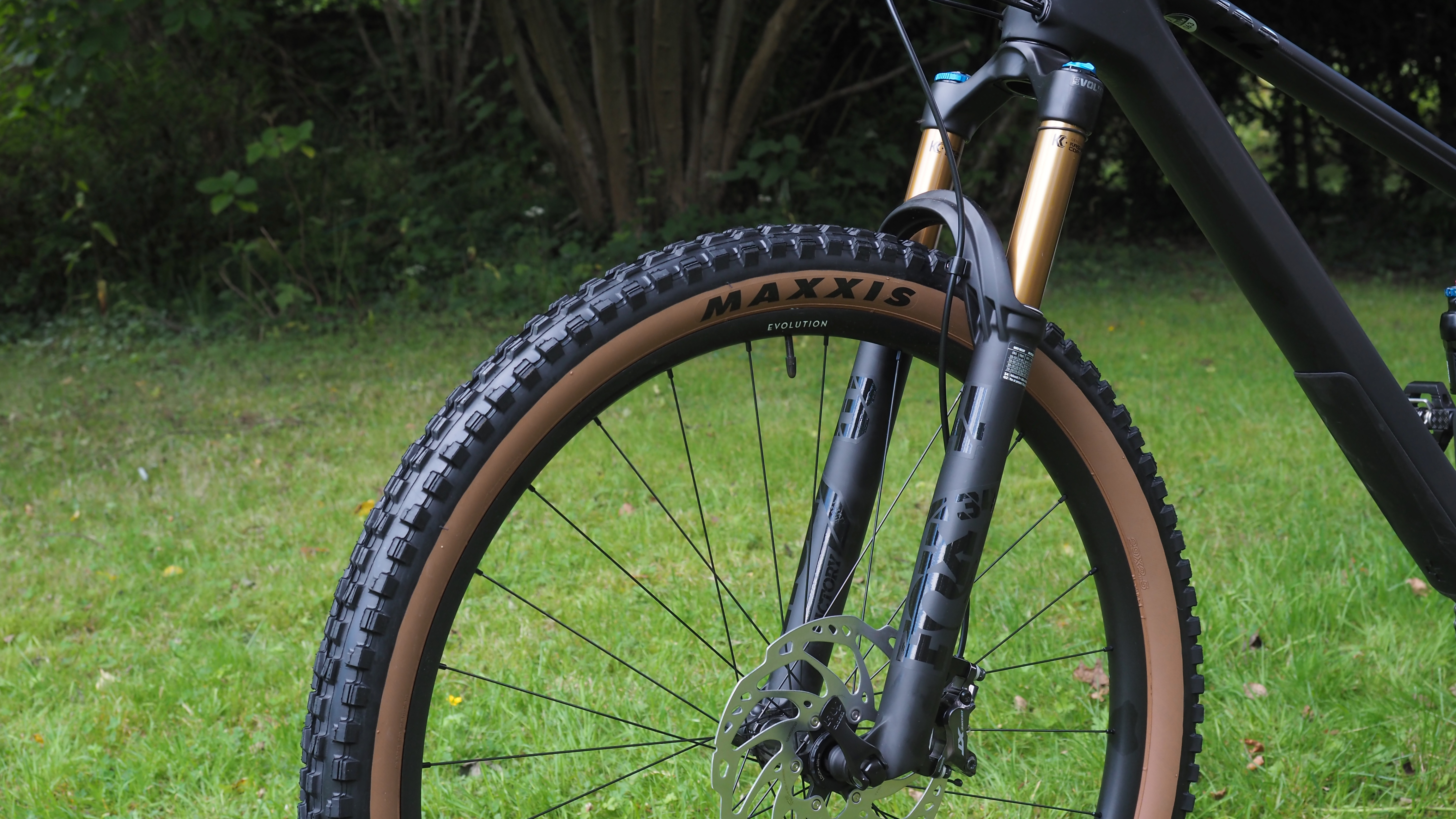
The wheels too are good to see at this price point. German brand Newmen isn’t super-common but has a strong pedigree, and their 28-spoke 30mm alloy SL A30 wheels have a reputation for being enduro-strength without being too heavy at about 1,780g. We certainly didn’t have any trouble with them; they span smooth and straight through the test. Complementing the bash-anything wheels are Maxxis Minion DHF tire front (2.5in) and rear DHR II (2.4in), in their lighter MaxxTerra incarnation, with EXO sidewall protection.
Our man at Cube described the EX as a bike for the trail rider who might want the confidence of a 36mm forked-bike in a lighter, shorter-travel package, and you can see how the fork, wheels and tires might create that kind of confidence.
Completing the package are a nice looking Praxis Girder carbon crankset, a Fox Transfer Factory dropper post, and Newmen alloy stem and bars.
The complete bike weighed in at 13.5kg for a medium.
If you want to move down or up in the ONE22 range, the entry level HPC TM 29 at £2,999 has a SRAM GX/NX setup. More interestingly, the SLT version at £4,499 saves a whopping 1.6kg with a lot more carbon, but it’s less of an all-rounder, with the slightly less sophisticated Fox 34 FIT4 fork and much less grip on the lighter Maxxis Rekon XC tires.
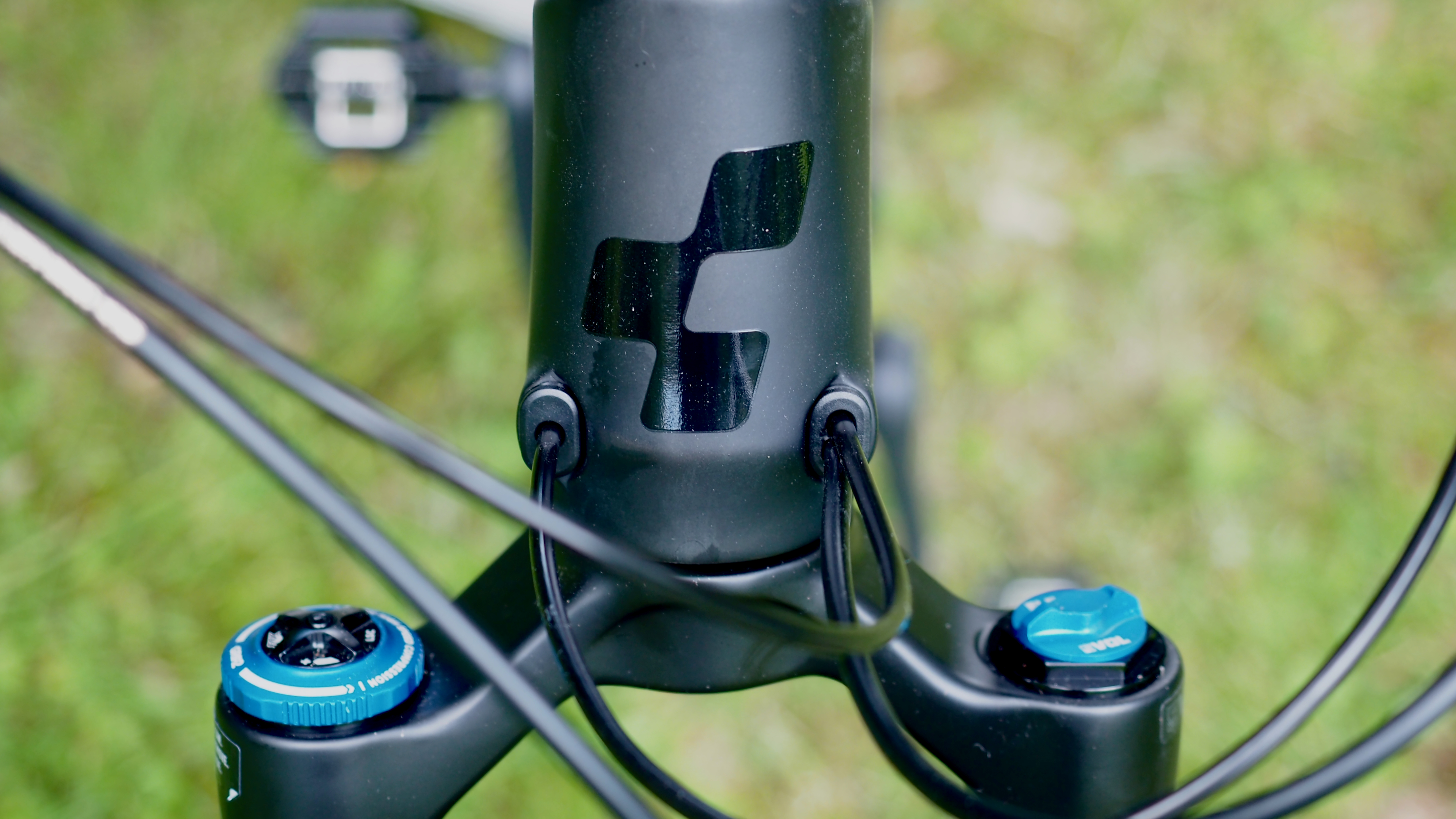
Ride, handling and performance
For a long time, I thought a full-susser would make me bypass the foundation skills I needed to master on a hardtail. And for some of the soft south-eastern trails I ride on, it’s true. It steamrollers away the little skill that’s needed to negotiate roots and bumps, forgives all your dumb line choices, and makes things less fun.
But mostly what the Stereo ONE22 did was open up trails that I just wouldn’t have gone near before, like the rocky MBR Trail at Coed Y Brenin with its smattering of drops. And it also made me think far more about flow on my trickier regular trails.
Rather than just neutralizing the trail and making big rocks feel like small rocks, it made me tackle things with a deliberate commitment that I hadn’t done since I was a kid. With an expectation that yeah, I probably will get across this if I stay calm.
Instead of my brain saying, ‘shall I go over this’, it was saying, ‘how shall I go over this?’. It made such a difference – psychologically and mechanically – when my default position was to keep going.

Even better, often I was not even consciously thinking, ‘how shall I go over this?’, I was looking ahead, further down the trail than I normally would, and trusting that the bike would take care of whatever was directly under my wheels at the time. When it did skitter, either the tires would catch their grip again in a way that my XC tires rarely do, or the bike had already moved onto a more secure section because I was riding with more speed and flow.
The Stereo ONE22 HPC EX 29 climbed way better than I’d realized it would. On slabby rock and steps, the Maxxis tires just gripped and kept going. And on the kinds of climbs that are strewn with uneven rock or little ridges, roots and lips, it was more likely to roll with a steady momentum through them instead of demanding a little burst of effort each time and eventually stalling to a halt.
On steep scrabbly dirt, although it was a couple of kilos heavier than my hardtail, it often felt psychologically easier because the tires had so much traction. I thought the front end might be hard to keep down on those super-steep climbs, but I could lean forward more than I expected without the rear losing grip. (If the older-school seatpost angle meant it had less climbing ability than it could have done, I didn’t notice.) With the shock set to the defaults for my weight, there was no noticeable bob, which was another surprise.
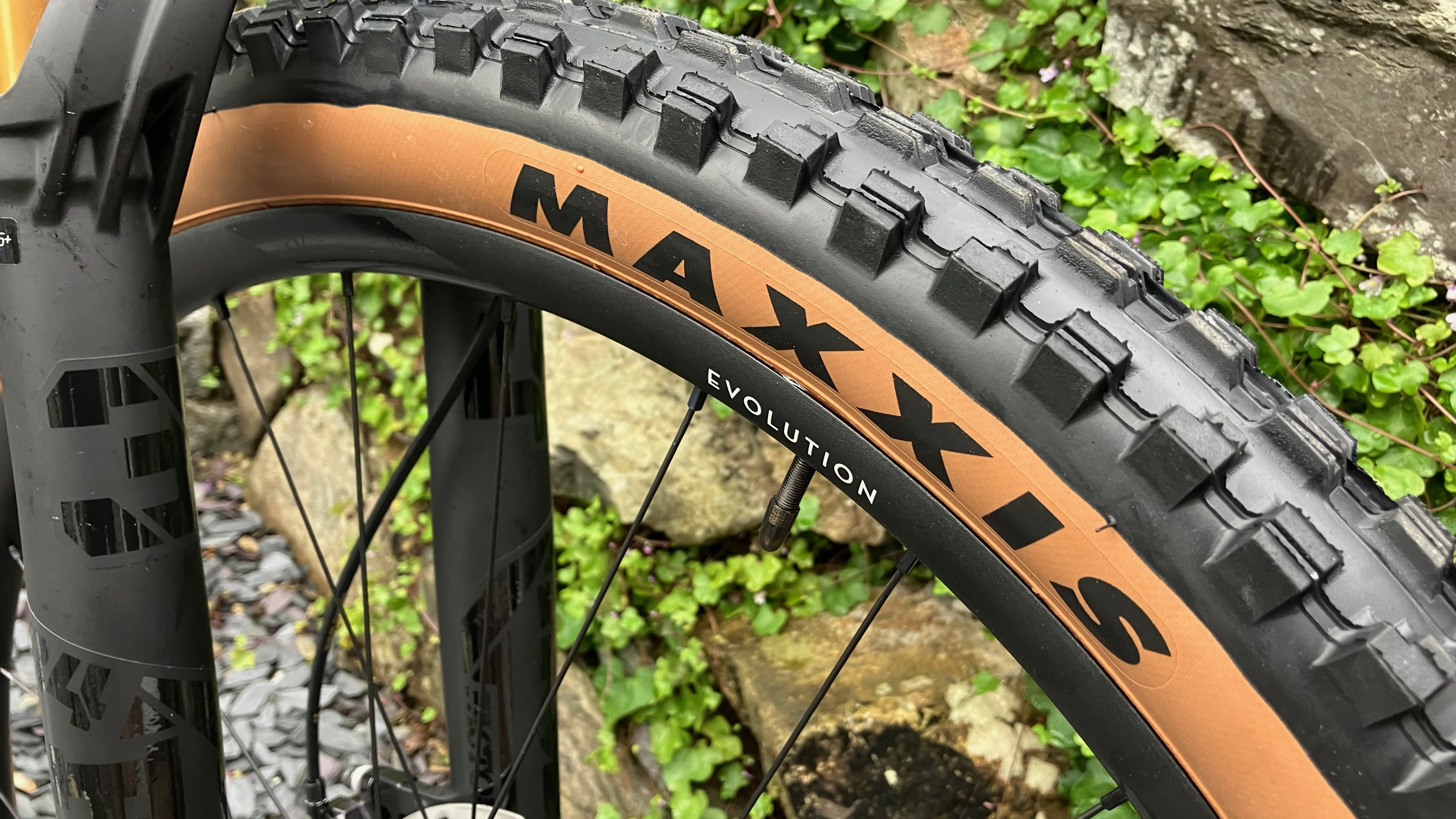
Downhill was another eye opener, not just for being able to go down single bigger drops than before, but more for being able to descend whole sequences of steps and drops without getting a halfway panic that things were getting out of control. The same on loose, babies-head rocks, like the brilliant main descent on the Pont Scethin loop near Barmouth in Snowdonia, when the Stereo ONE22 just kept rolling while I kept grinning and lightly piloting a line. The tires, the wheels, the fork, the rear suspension and the riding position all played their part in a ride that was intensely focused and adrenaline filled.
I suspect it made a useful difference that the XT brakes were so capable, too. On those rough, bouncing descents, a gentle continuous pressure on the back brake lever alone could keep the speed down a little without risk of locking out the back wheel, and without having to go near the front brake. The combination of the brakes and the Maxxis Minion tires also gave me the reassuring knowledge in the back of my mind that I could scrub off a lot of speed quickly if I needed to, even on scrabbly ground.
I confess I didn’t change the fork settings much after some initial experimentation with rebound and compression, but it did an impressive job of taming small chattery bumps while staying composed on bigger hits. If mid-stroke support means being able to move the bike confidently round corners while going down steps at the same time, then I discovered what it was, and it could do this even when the compression was set to low.
The rest of the bike played nicely throughout the test period. The SDG Bel Air saddle was all-day comfortable, for me, at least, the Fox Transfer Factory dropper responsive, and the firm-clicking Shimano XT gears didn’t miss a beat.
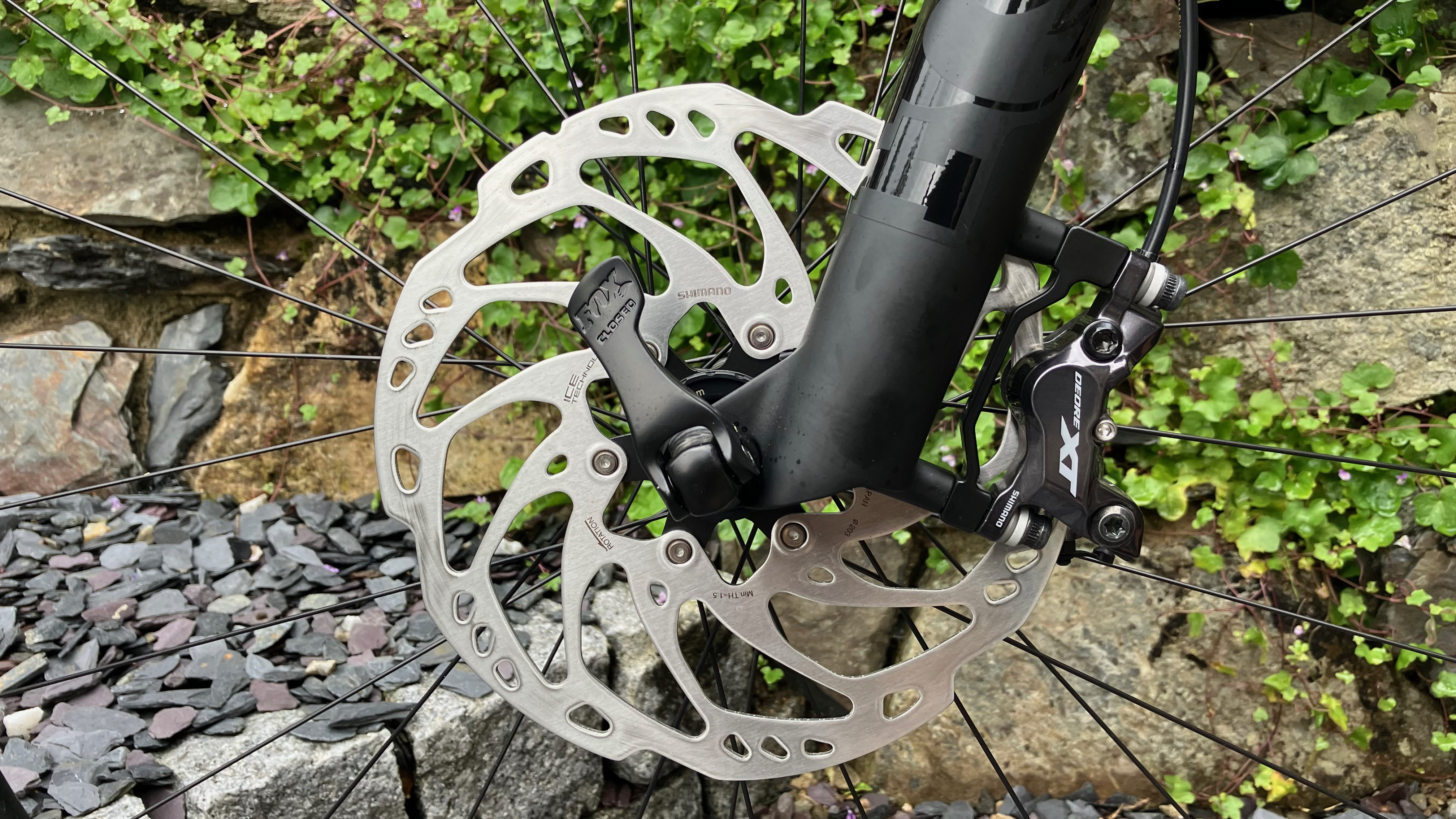
Verdict
If I’m sounding uncritical, it’s because I enjoyed pretty much everything about the Cube Stereo ONE22 HPC EX 29. The only (predictable) negative is that it’s no sprinter and you notice its lack of kick when the trail is smooth, though even then on an all-round ride this is balanced by the way it keeps speed on rougher ground.
Clearly some of my enthusiasm just came from being out on a well-built, modern full-susser when I’m more used to a hardtail. And while I clattered down plenty of rocks and the odd easier black run, it’s fair to say I wasn’t spending much time in the air, or smashing the limits of its handling. But in the best way, it struck me as a capable, confidence-inspiring all-day Volkswagen Golf of a trail bike, and in this spec, a very nicely equipped one.
I loved the level of fun; the way it encouraged me to commit to a line, and the novelty of being able to turn a corner on a rough unknown trail and feel unflapped by what I saw. And an added bonus was that when I got back on my hardtail, I rode with extra confidence.
So it certainly changed my world. And is it good value? Hand on heart I haven’t ridden enough bikes to tell you that. But when the forks, shock and dropper retail at half the price of the whole bike, and at a time when you can easily spend £4,000+ on an SLX-specced downcountry rig with relatively ordinary forks, it feels like it is.
Test conditions
- Weather: British summer. Plenty of rain but not much mud
- Surface: Firm loam and dirt, Welsh rocks, gravel, rooty bermy bike parks
- Trails: Coed y Brenin, Penmachno, Friston, Surrey Hills, local woods and gravel
Tech specs: Cube Stereo ONE22 HPC EX 29
- Discipline: Trail
- Price: £3,999 / €4,099
- Head angle: 67 degrees
- Frame material: Carbon fiber with alloy rear triangle
- Sizes: S, M (tested), L, XL
- Weight: 13.5kg (size medium)
- Wheel size: 29in
- Fork: Fox 34 Float Factory FIT GRIP2, 130mm travel
- Shock: Fox Float X Factory, 120mm travel
- Chainset: Praxis Girder Carbon, 30T
- Rear mech: Shimano XT
- Shifter: Shimano XT
- Cassette: Shimano SLX 10-51T 12 speed
- Brakes: Front: Shimano XT. Front: 4-piston with 203mm rotors. Rear: 2 piston with 180mm rotors
- Tires: Front: Maxxis Minion DHF, MaxxTerra/EXO, 2.5in. Rear: Maxxis Minion DHR II, MaxxTerra/EXO, 2.4in
- Wheels: Newmen Evolution SL A30 alloy, 28 Spokes, 15x110mm/12x148mm
- Bars: Newmen Evolution SL, 760mm, alloy
- Stem: Newmen Evolution SL
- Grips: SDG Thrice, lock-on
- Seatpost: FOX Transfer Factory dropper post
- Saddle: SDG Bel Air V3 Lux Alloy

Sean has old school cycle touring in his blood, with a coast to coast USA ride and a number of month-long European tours in his very relaxed palmares. Also an enthusiastic midpack club cyclocross and XC racer, he loves his role as a junior cycle coach on the Kent/Sussex borders, and likes to squeeze in a one-day unsupported 100-miler on the South Downs Way at least once a year. Triathlon and adventure racing fit into his meandering cycling past, as does clattering around the Peak District on a rigid Stumpjumper back in the day.
Height: 173cm
Weight: 65kg
Rides: Specialized Chisel Comp; Canyon Inflite CF SLX; Canyon Aeroad; Roberts custom road bike
